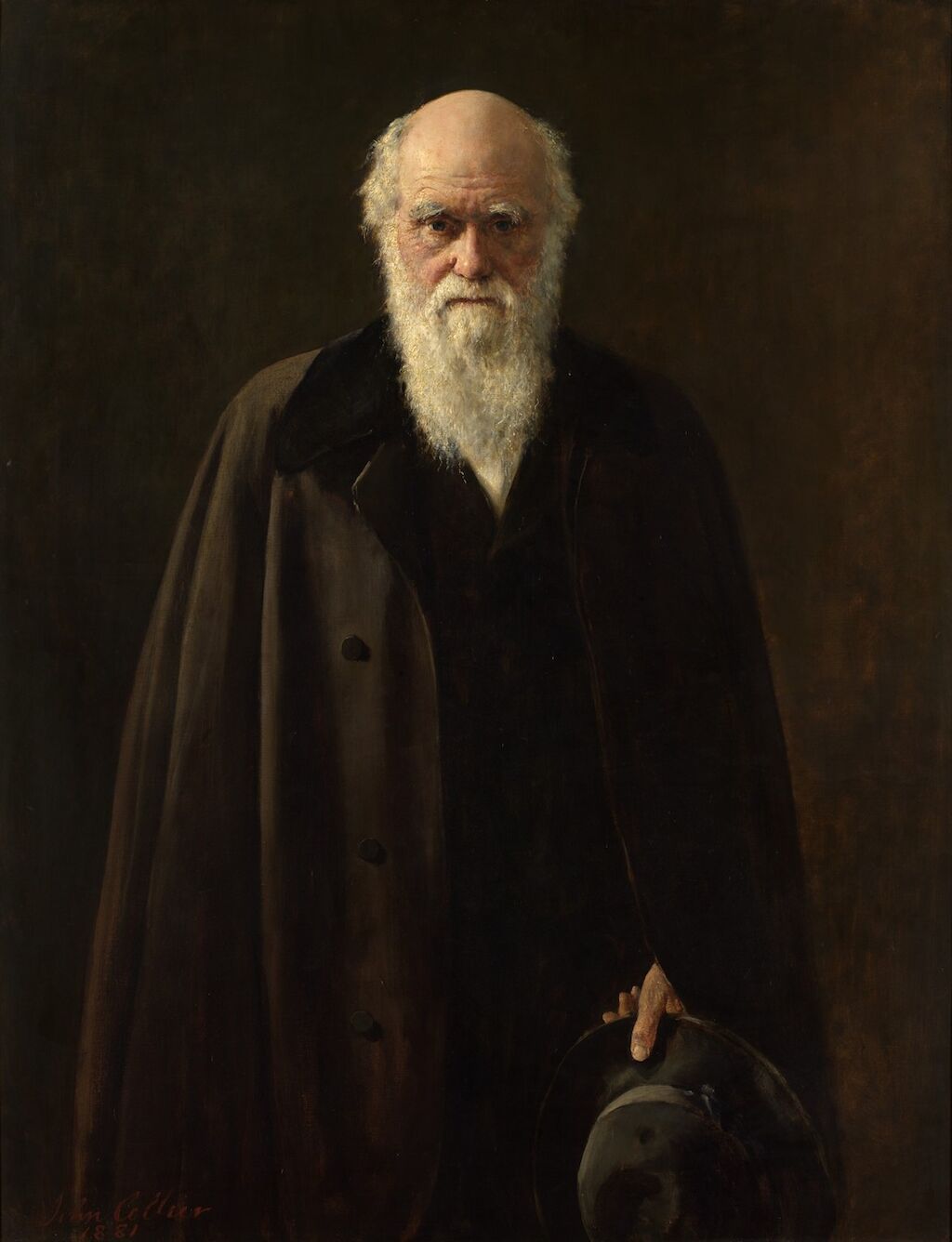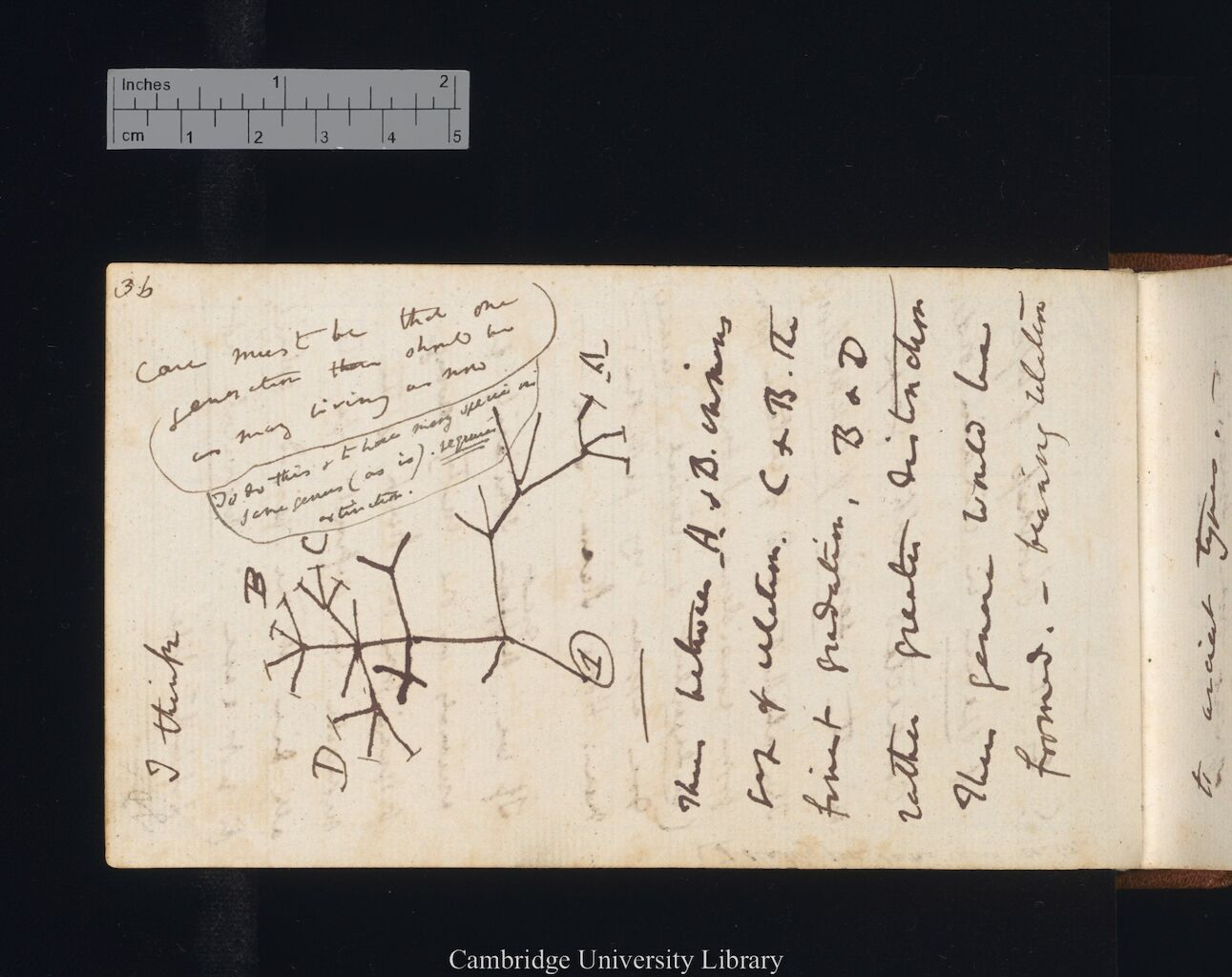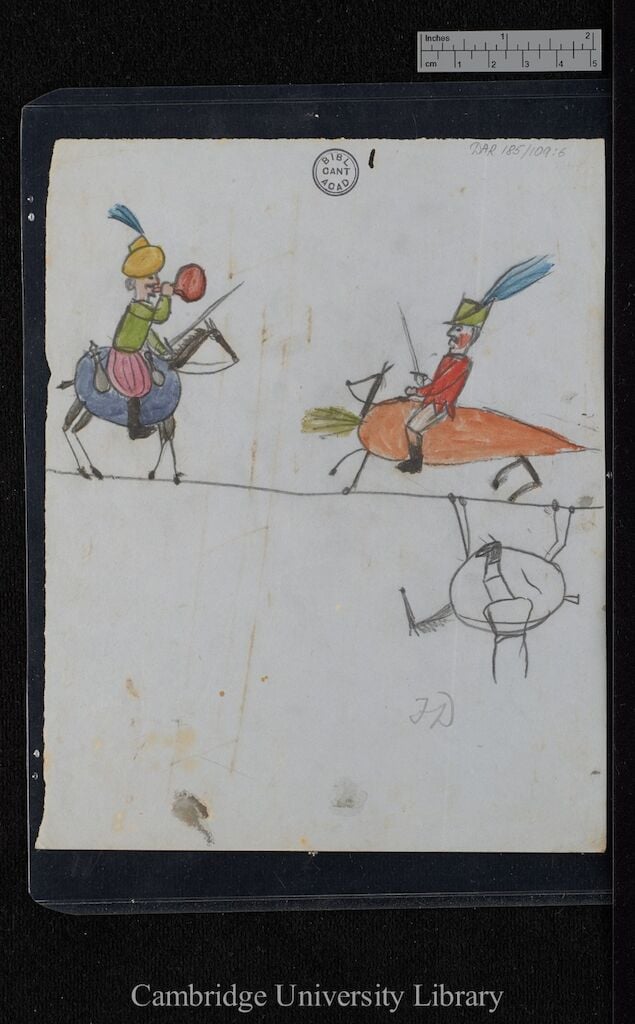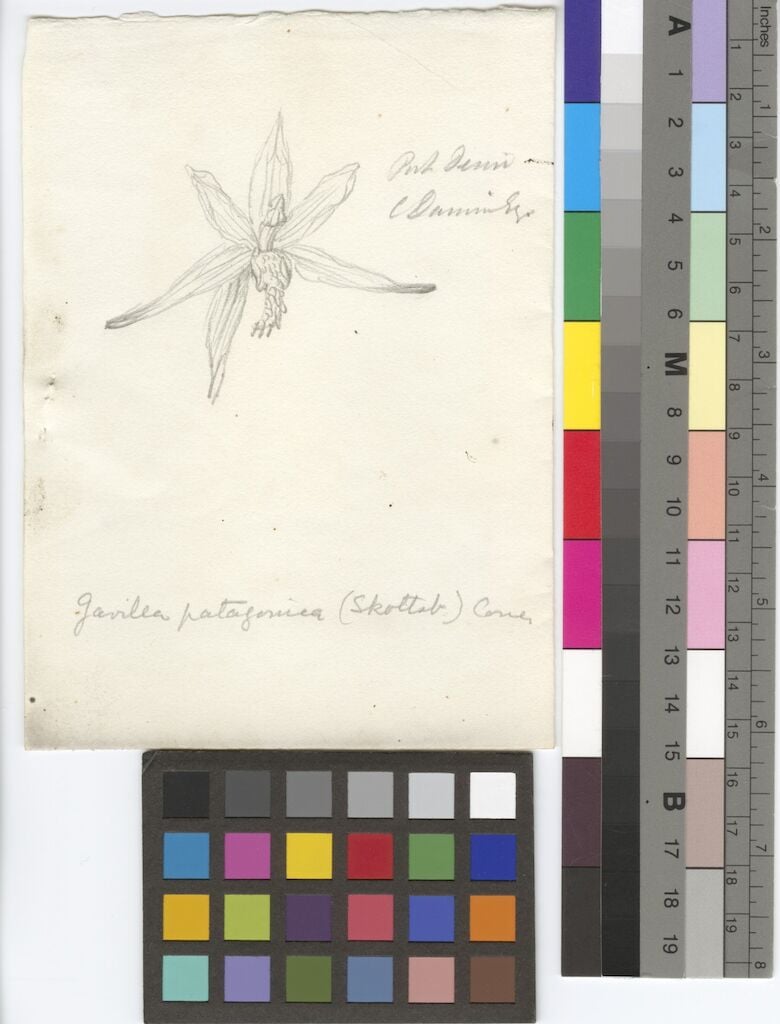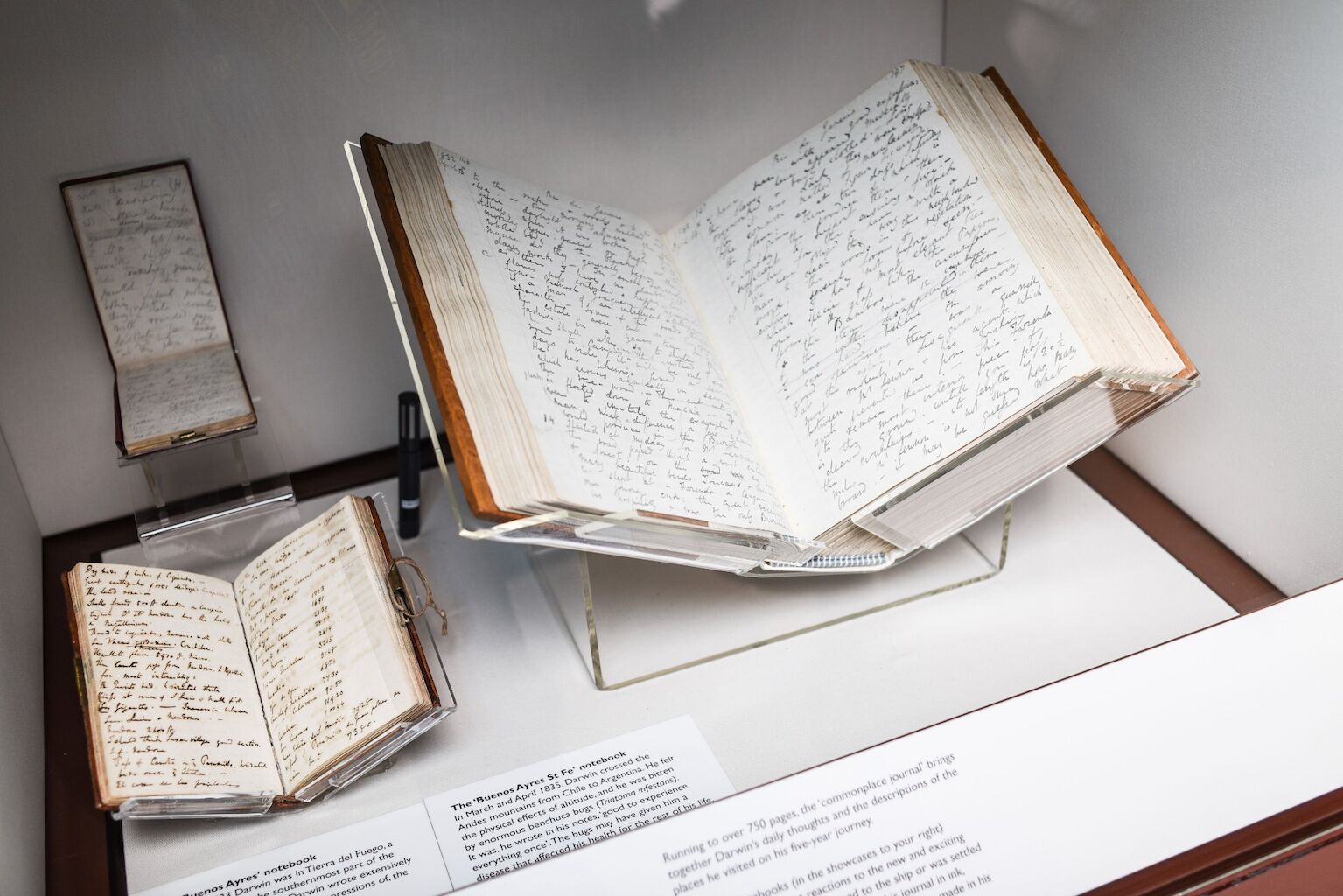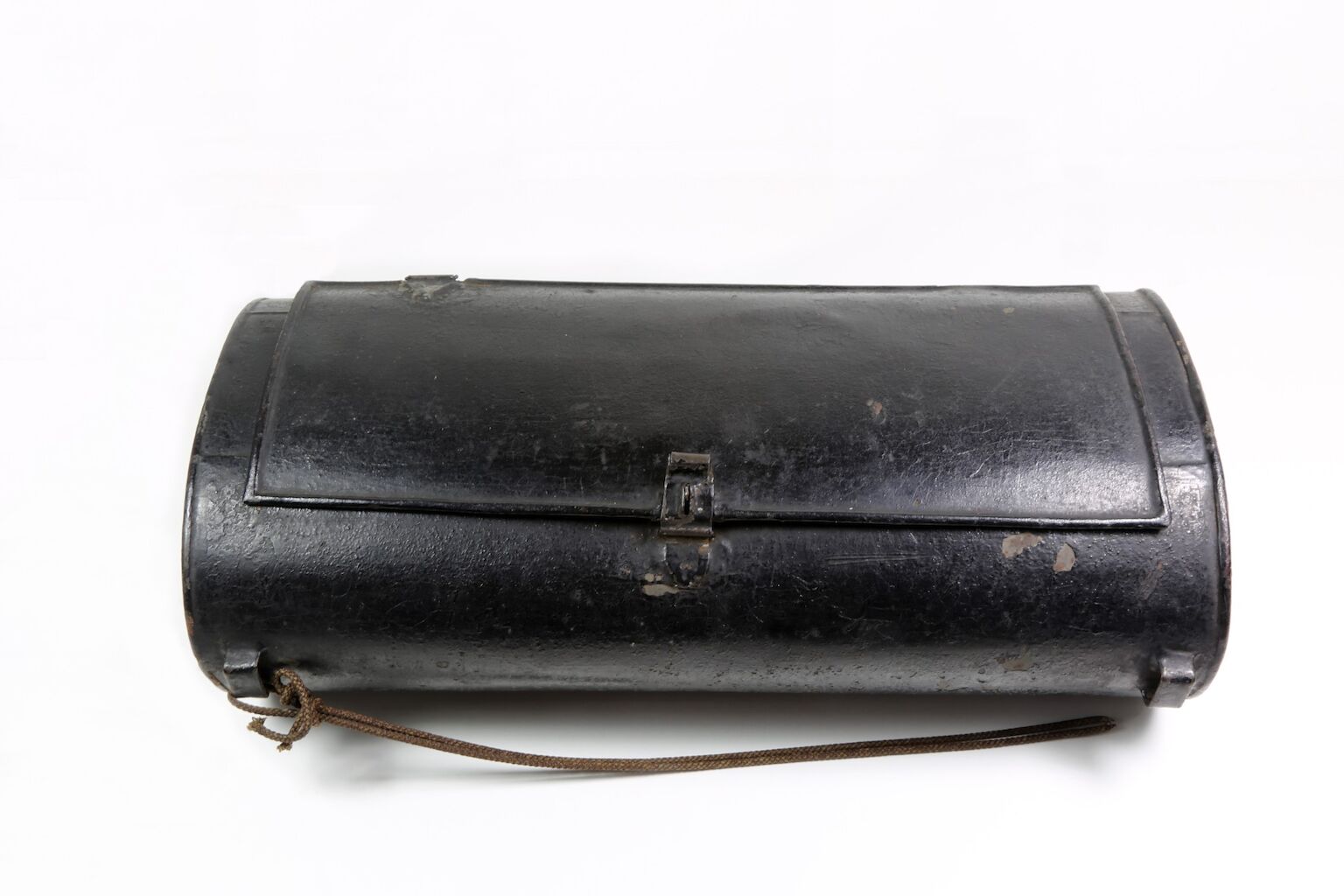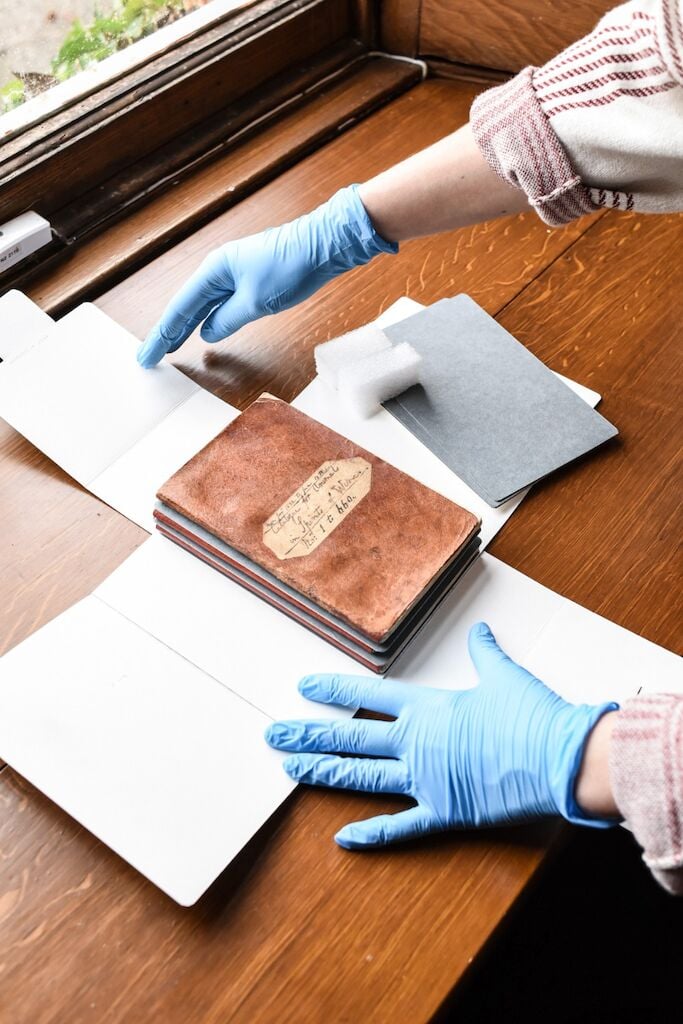A collaboration between Cambridge University Library, the Natural History Museum, the Linnean Society of London, English Heritage’s Down House, the Royal Botanic Gardens, Kew and the National Library of Scotland, the Charles Darwin archive provides a unique window into the life and work of one of the world’s most influential natural scientists.
The complete archive, comprising over 20,000 items, includes Darwin’s records illustrating the development of his ground-breaking theory of evolution and extensive global travels.
At Cambridge University Library, the Darwin Archive is a significant collection of Darwin’s books, experimental notes, correspondence, and photographs, representing his scientific and personal activities throughout his life.
The collection in Cambridge includes Darwin’s pocket notebooks used for recording his theoretical musings. These provide important insights into the development of his thought and feature the iconic ‘Tree of Life’ diagram which he drew on his return from the voyage of the HMS Beagle.
The Linnean Society of London holds several of Darwin's letters, manuscripts and books. Here is also home to John Collier’s original iconic portrait of Charles Darwin, commissioned by the Society and painted in 1883 to commemorate the first reading of the theory of evolution by natural selection at a Linnean Society meeting in 1858.
At the Natural History Museum, a letter written to his wife Emma in 1844, provides insight into Darwin’s perceived significance of his species theory research and holds instructions on what she should do in the case of his sudden death. This is alongside other letters to Museum staff and other family members which demonstrate the broad scope of his scientific thinking, research and communication ranging from caterpillars to volcanoes, dahlias to ants and the taking of photographs for his third publication Expression of the Emotions in Man and Animals.
Correspondence with Darwin’s publisher John Murray, held at the National Library of Scotland document the transformation of his research into print, including the ground-breaking On the Origin of Species publication.
At the Royal Botanic Gardens, Kew, documents include a highly significant collection of 44 letters sent around the HMS Beagle expedition from Darwin to Professor John Stevens Henslow, detailing his travels and the genesis of his theory of evolution as he comes in contact with new plants, wildlife and fossils; as well as a rare sketch of the orchid Gavilea patagonica made by Darwin. Other items include a letter from Darwin to his dear friend Joseph Hooker, Director of Kew in which he requests cotton seeds from Kew's collections for his research.
Down House (English Heritage) in Kent was both a family home and a place of work where Darwin pursued his scientific interests, carried out experiments, and researched and wrote his many ground-breaking publications until his death in 1882.
The extensive collection amassed by Darwin during his 40 years at Down paint a picture of Darwin’s professional and personal life and the intersection of the two. The archive here includes over 200 books from Darwin’s personal collection, account books, diaries, the Journal of the Voyage of the Beagle MSS, and Beagle notebooks and letters. More personal items include scrapbooks, Emma Darwin’s photograph album and Charles Darwin’s will. The collection at Down House has been mainly assembled through the generous donations of Darwin’s descendants.
This inscription marks a significant milestone in recognising Darwin’s legacy, as it brings together materials held by multiple institutions across the UK for the first time, ensuring that his work's scientific, cultural, and historical value is preserved for future generations.
In line with the ideals of the UNESCO Memory of the World Programme, much of the Darwin archive can be viewed by the public at the partner institutions and locations.
The UNESCO International Memory of the World Register includes some of the UK’s most treasured documentary heritage, such as the Domesday Book, the Shakespeare Documents, alongside more contemporary materials, including the personal archive of Sir Winston Churchill. The Charles Darwin Archive now joins this esteemed list, underscoring its historical, scientific, and cultural significance.
The inscription of the Charles Darwin archive comes as part of UNESCO’s latest recognition of 74 archives worldwide onto the International Memory of the World Register. These newly inscribed collections include a diverse range of documents, such as the Draft of the International Bill of Human Rights, the papers of Friedrich Nietzche, and the Steles of Shaolin Temple (566-1990) in China.

